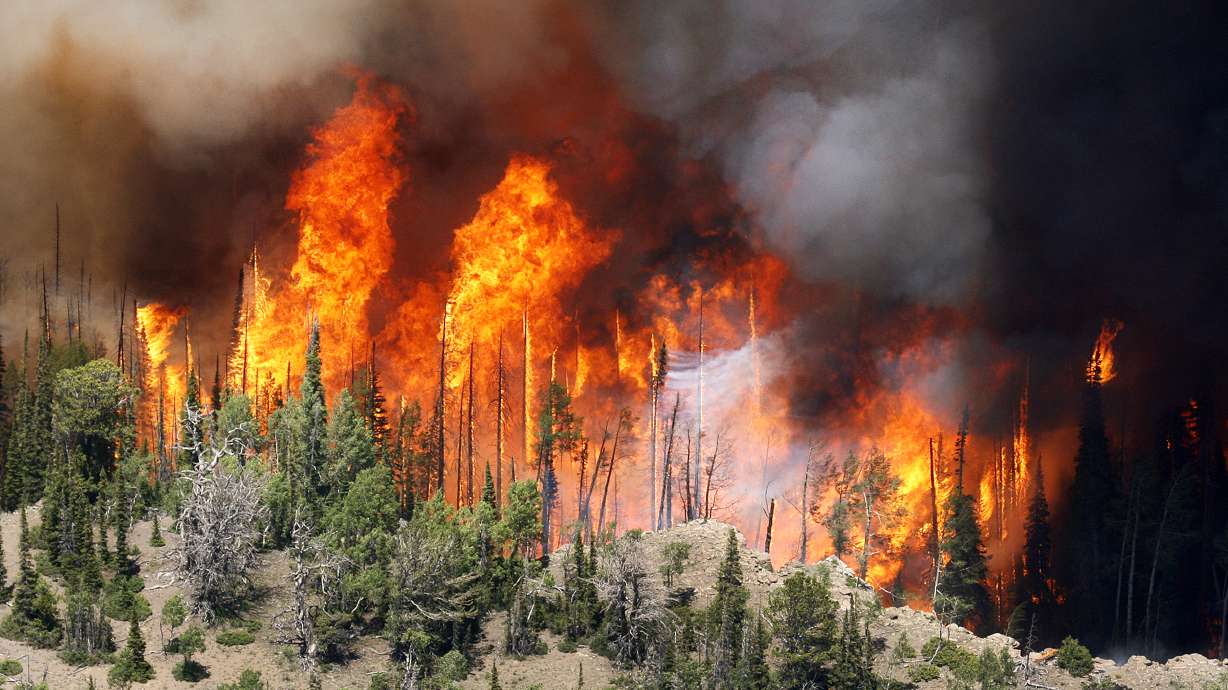Estimated read time: 3-4 minutes
This archived news story is available only for your personal, non-commercial use. Information in the story may be outdated or superseded by additional information. Reading or replaying the story in its archived form does not constitute a republication of the story.
SALT LAKE CITY — Firefighting agencies in Utah are considering how to eliminate two of the state’s dispatch centers, but that won’t affect how fire crews are distributed across the state, according to a state spokesman.
Currently, five dispatch centers handle wildfire response in Utah — one each in Salt Lake City, Cedar City, Richfield, Vernal and Moab, said Jason Curry, Utah Division of Forestry, Fire and State Lands Public Information Officer.
In 2016, different agencies started talking about how to reorganize the centers, Curry said.
He added that a study determined that the state could operate with three of the centers. The interagency study was administered by a three-person committee, with one person from the Bureau of Land Management in Wyoming, one from the U.S. Forest Service in Utah, and one from Idaho state government.
The current plan is to consolidate the Moab, Vernal and Richfield dispatch centers into one, but that’s still a long way out, Curry said.
When that consolidation takes place, though, no fire crews, supplies or equipment will be relocated, Curry said.
“We’re not going to be relocating any firefighting resources,” he said. “All the resources and all the supplies are all going to remain where they currently are. We have that lined up pretty well.”
The state of Utah administers the dispatch centers, along with the U.S. Forest Service, the Bureau of Land Management, the National Park Service and the U.S. Fish and Wildlife Service.
About 98 percent of wildfires in Utah are put out by the local agency that responds first to the scene. The other two percent of fires that progress beyond that initial response may require state and federal resources from the agencies that operate the dispatch centers.
The agencies are taking time to study how best to consolidate the centers in a safe and effective way, Curry said. There’s no set timeline on when the two centers might be eliminated, but it’s likely that consolidation will take place over the next three years, he said.
Also to be determined are the area boundaries for which each dispatch center will be responsible following the consolidation, Curry said. The agencies will consider fire currents, weather patterns, fuel types and other factors before deciding that, he said.
With the consolidation, between six and eight dispatch center jobs will be eliminated, but those people won’t be laid off, Curry said. They will be absorbed into other jobs or positions within the agency.
During the fire season, the number of people who work at a dispatch center depends on fire activity and conditions.
Throughout the consolidation process, all the agencies will consider safety the top priority, Curry said.
“If this team feels like any path forward can’t be pursued without impacting firefighter safety or public safety, then the whole process — everybody has agreed up front — it will be abandoned,” he said. “If we can’t do this safely, there’s nothing that we can do in terms of saving money and leveraging technology that is worth putting firefighters and the public at risk.”









